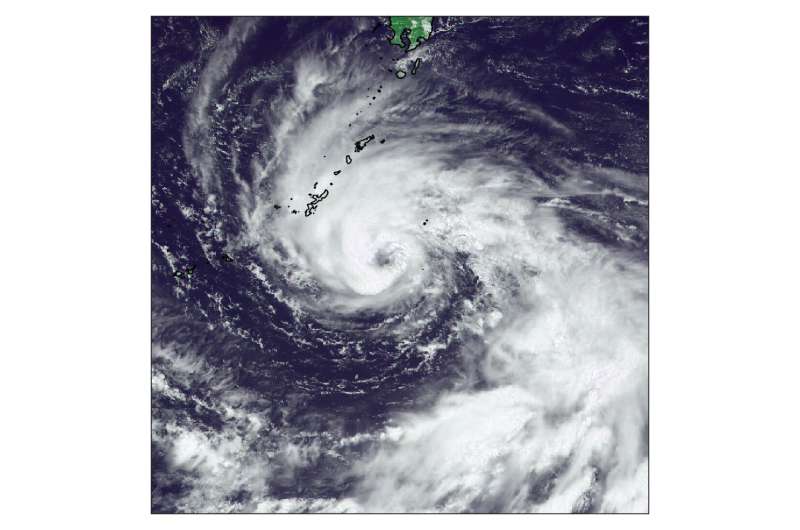Environmental helicity may affect the outer-core size of tropical cyclones

The outer-core size of tropical cyclones (TCs) is vital for evaluating their destructive potential. It is usually defined as the radius of gale-force wind (R17), but accurately forecasting R17 is challenging owing to our incomplete understanding of the physical mechanism that determines it. Nonetheless, there is a general consensus that the TC outer-core size is mainly regulated by the TC's outer spiral rain bands. The factors conducive to the development and organization of convection in the outer-core region of TCs are also favorable for the maintenance and expansion of their outer-core size.
Researchers from Nanjing University, China, and University of Reading, UK, investigated the statistical relationships between environmental thermodynamic and dynamic factors and TC outer-core size in the South China Sea. They provide strong evidence that among all possible environmental factors, the low-level environmental helicity has the most profound impact on TC outer-core size, regardless of whether the TCs are local or migrating from the western Pacific Ocean.
Helicity is a kinematic predictor for intense convections. Positive helicity means that the rotation-axis of the flow is in the same direction as the flow—that is, the wind rotates and moves in the direction of rotation. Usually, a clockwise veering hodograph will produce positive helicity, and interestingly, scientists observe that positive helicity can be beneficial for the organization and persistence of intense convections.
The composite analyses carried out in this study indicate that the environmental helicity could have a large impact on convective activities within the TC outer-core region. Large positive environmental helicity favors the occurrence of intense and long-lasting convection, strong radial inflow, large angular momentum import, and thus large R17. These results have recently been published in Atmospheric and Oceanic Science Letters.
According to this study, the dynamic constraints of the environment, such as the environmental helicity, are proposed to be potentially important factors for the maintenance and change in TC outer-core size.
"But whether such a conclusion can be generally applied needs to be carefully examined in other basins by using both observational and advanced numerical simulations. Furthermore, since the environmental helicity is of importance to the organization and intensity of TC convective activities that are also relevant to the inner-core size of the TC, it naturally leads to the hypothesis that there might also be a link between the environmental helicity and TC inner-core size, which deserves future investigation," adds Associate Prof. Chu, the corresponding author of this research paper.
More information: Min Li et al, On the relationship between tropical cyclone size and environmental helicity in the South China Sea, Atmospheric and Oceanic Science Letters (2022). DOI: 10.1016/j.aosl.2022.100205
Provided by Chinese Academy of Sciences




















